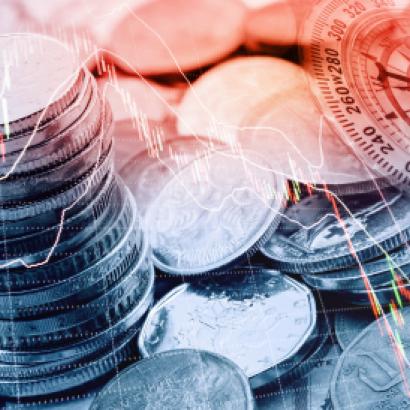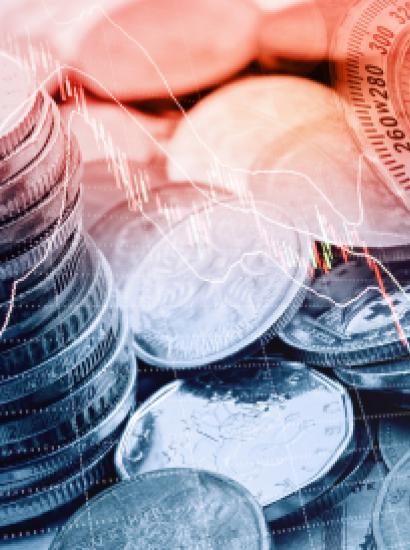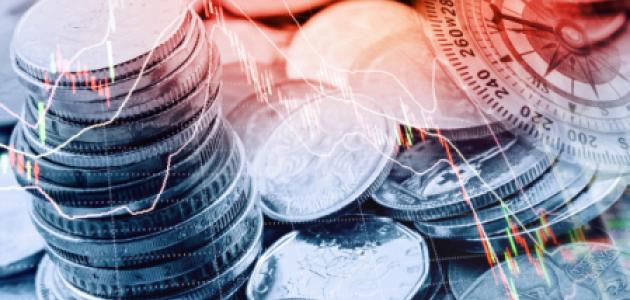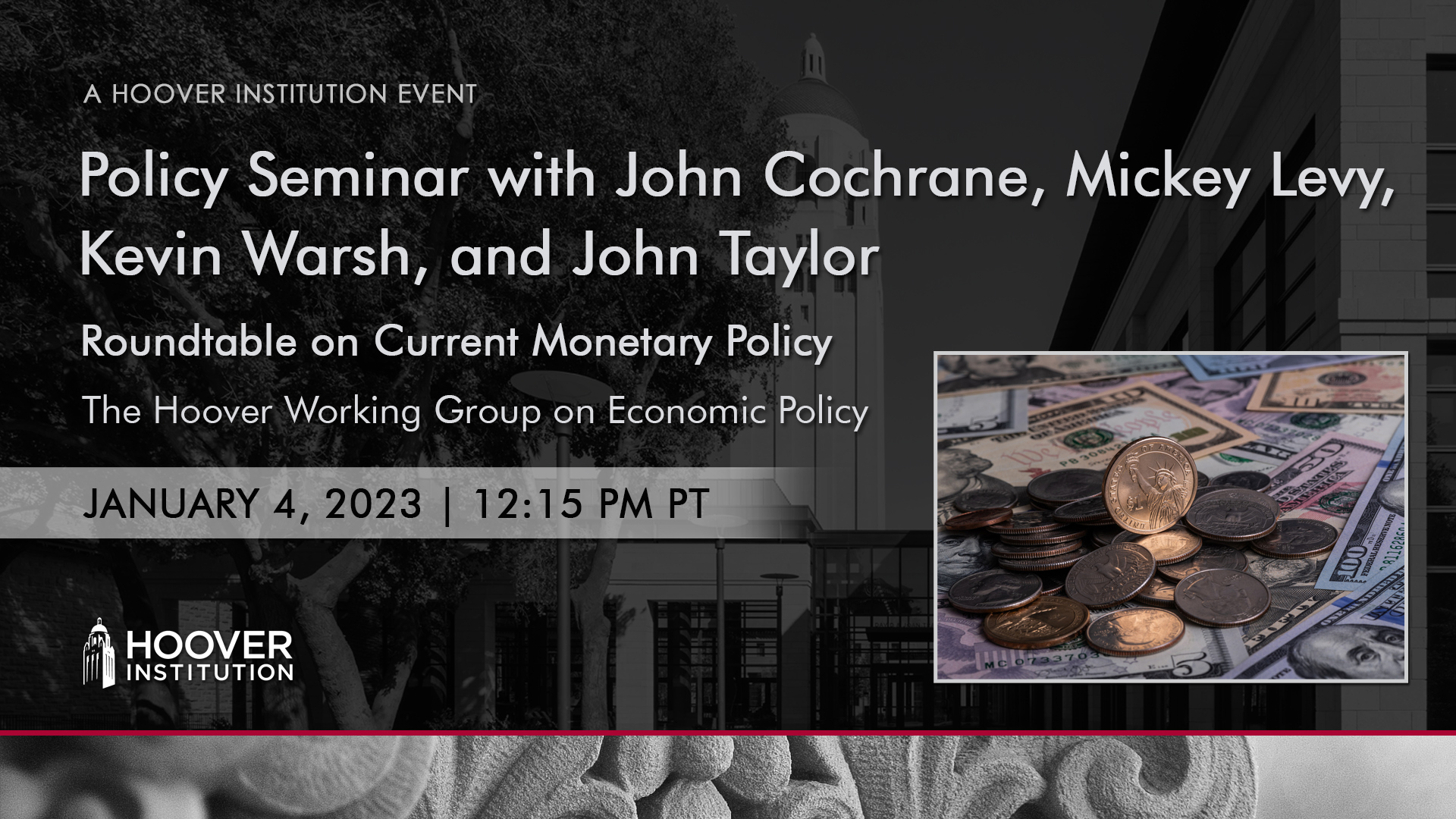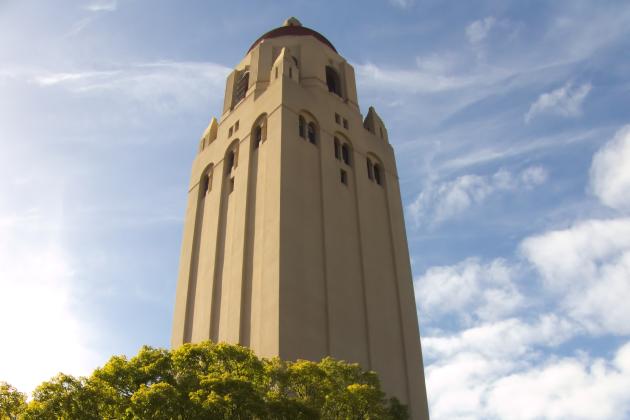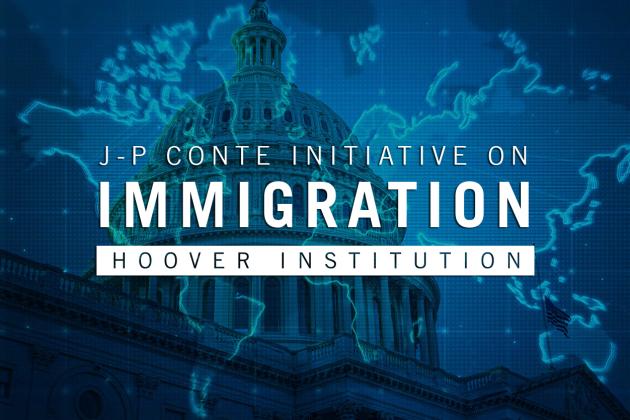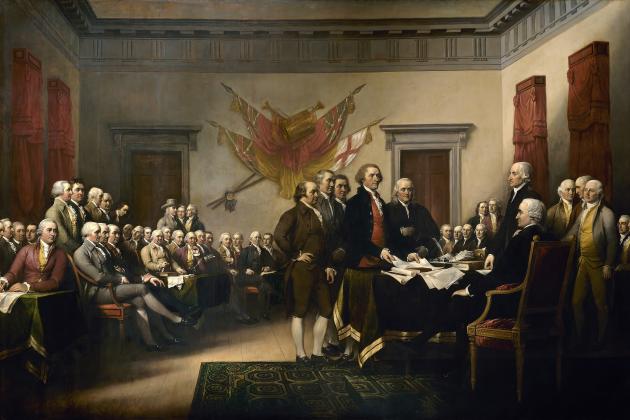PARTICIPANTS
John Cochrane, Mickey Levy, Kevin Warsh, John Taylor, Joshua Aizenman, Terry Anderson, Richard Anderson, Christopher Ball, Michael Bauer, Steven Blitz, Lauren Blum, Valentin Bolotnyy, Michael Bordo, Michael Boskin, Corey Braddock, Nicolas Caramp, Jake Carney, Jimmy Chang, Denis Coleman, Steven Davis, Steve Dailey, Randi Dewitty, Sami Diaf, Randi Dewitty, Jim Dorn, Katrina Dudley, Stefan Dürmeier, Sebastian Edwards, Denise Elson, Christopher Erceg, Eugene Fama, David Fedor, Jared Franz, Tyler Goodspeed, Bob Hall, James Hamilton, Rick Hanushek, Adele Hayutin, Thomas Helbling, Robert Heller, Gregory Hess, Robert Hetzel, Nicholas Hope, Takeo Hoshi, Nils Karlson, Marc Katz, Mervyn King, Don Koch, Evan Koenig, Don Koch, Roman Kräussl, Jeff Lacker, Oliver Landmann, Charles Leung, Andrew Levin, Jack Levy, John Lipsky, Dennis Lockhart, Jim Mattis, Ellen Meade, Michael Melvin, Axel Merk, Roger Mertz, Larry Meyer, Alexander Mihailov, Rich Miller, Dinsha Mistree, David Mulford, Athanasios Orphanides, David Papell, Ruxandra Prodan-Boul, Flavio Rovida, Brian Sack, Ann Saphir, Lawrence Schembri, Allison Schrager, Pierre Siklos, Tom Stephenson, George Tavlas
ISSUES DISCUSSED
John Cochrane, the Rose-Marie and Jack Anderson Senior Fellow at the Hoover Institution, Mickey Levy, senior economist at Berenberg Capital Markets and member, Shadow Open Market Committee, Kevin Warsh, the Shepard Family Distinguished Visiting Fellow in Economics at the Hoover Institution, and John Taylor, the Mary and Robert Raymond Professor of Economics at Stanford University and the George P. Shultz Senior Fellow at the Hoover Institution, participated in a virtual roundtable and discussed recent monetary policy. John Taylor was the moderator.
To read John Cochrane’s slides, click here
To read Mickey Levy’s slides, click here
To read John Taylor’s slides, click here
WATCH THE SEMINAR
Topic: “Roundtable on Current Monetary Policy”
Start Time: January 4, 2023, 12:15 PM PT
>> John B. Taylor: Anyway, welcome, everybody, and happy New Year 2023. It's great to see you all on the screens. This is the Hoover Economic Policy Working Group, and we're going to have a roundtable on current monetary policy, fiscal policy, whatever. And I just want to mention that one year ago, January 5, 2022, the same four people spoke.
But so much has changed. Cochrane is changed, actually, has changed, sorry, the world has changed, Mickey has changed, Kevin has changed. But I haven't changed. So we'll see. But the minutes were released this morning, so you all know what that is. It'll be ongoing. I wrote, ongoing increases will be appropriate, strongly committed, 2%, so it sort of depends on how you read that.
It's very, very important. So we will go in the order I just mentioned, starting with John Cochran. And let me say we're going to speak for ten minutes each or so, and you're welcome to jump in with questions and comments. IJust raise your mechanical hand, we'll see you and call on you, and we'll be on with this very important topic.
So go ahead. John Cochran.
>> John H. Cochrane: Okay, thank you, everybody. I decided what should we talk about? Let's talk about inflation, where we are. Just as a reminder, here's inflation at January 2021, boom, inflation started going last year. Nothing had happened. And the fed has now started moving, but not up to inflation.
And inflation is now starting to ease, which is an interesting fact. It's coming down. We'll see if it continues. But it's coming down, even though interest rates are still substantially below inflation. What I want to do about this, here's the visual version of my approach. I really wanted to go last so I could tell the University of Chicago joke properly.
So much for the real world. But how does it work in theory? But that's what I have to offer. The theory, of course, being what I've been thinking about for the last year. There's a tendency here to be a two year old with a hammer to which everything looks like a nail.
But that's what we got. That is last picture, my comparative advantage. So that's what I'll quickly do. Now, most of you have seen some of this over the year, and I'm kind of summaring up thoughts over the last year of where we stand. John Taylor rightly tells us to think in terms of models.
I think in terms of a fairly straightforward new Keynesian model, augmented with a recognition that there's fiscal policy out there.
>> Sebastian Edwards: John, if I may interrupt very briefly, your first slide. You have CPI, and some people want to use. And it's straight CPI, if I understand correctly, it's not even core.
Could you tell us why you're using CPI rather than PCE or any of the other measures that.
>> John H. Cochrane: Just for artistic reasons, I presume one of the people following up will have a comparison. One of the interesting things going on right now, actually is a awakening to the difference between various different measures of inflation and sectoral inflation, how inflation dynamics propagate.
I just don't have anything to say about it. I just wanted to artistically say we're at this moment of kind of interesting, inflation came, inflation seems to be easing, and does it continue easing or not? That's all I got to say. So I made the graph in two minutes.
So when I think in terms of theory, theoretical exercise number one, what happens if the Treasury and the Fed drop 5 trillion bucks in money and give people checks and interest rates do nothing? So this is a fiscal shock with no uninterest, and the Fed doesn't do anything.
The response to that is inflation. And since prices are sticky, it takes a while. But what you're basically doing is inflating away the extra debt that people don't think will be repaid. And that takes a year or two. But there we are, long, drawn out period of inflation.
That looks to me remarkably like exactly what we saw, at least at the beginning of the year. Year, a $5 trillion fiscal shock leading to it's going to be inflated away. But this is a graph that has that strange feature that I showed you, that inflation fades away even though interest rates stay below inflation.
This isn't a monetary phenomenon. What we're just doing is inflating away a certain amount of nominal debt. So that's why inflation comes. But that's also why inflation goes. Even if the Fed does nothing, the Fed can do something better, as you'll see in a minute. That's sort of picture one I think we think of today, that's fairly hopeful.
If we don't run another huge fiscal shock, inflation will melt away. Now, what could the Fed do about it? Here's picture two. There's a few too many things on this picture, because I made it for other purposes. But look for the moment just at the inflation line and the blue interest rate line.
If the Fed raises interest rates, then here's raising interest rates 1%. Then what happens is it can lower inflation in the short run, though, inflation goes up again in the long run. So this is a model holding fiscal policy constant, standard new Keynesian model. The Fed faces an unpleasant interest rate arithmetic, I like to call it.
It can lower inflation and create a recession in the short run, but it does so at the cost of higher inflation in the long run. Now, clearly this might not be optimal, so why doesn't the Fed come in and smooth this shock? Why doesnt the Fed do what its supposed to do and lower inflation?
Its exactly what the Fed is doing. So as I look at the future, I think about adding to this underlying shock, this monetary policy response. And what do you get? Well, you start with some inflation and you add some less inflation and you get lower inflation, but lower inflation today and higher inflation in the future.
What would happen if the Fed had done what John told it to do in this model? One way for the Fed to respond to a fiscal inflation by raising interest rates is to simply follow a Taylor rule. If the Fed responds to this inflation by raising interest rates, then you automatically add the two graphs together.
So here is same exercise as this one. What would have happened had the Fed followed the Taylor rule? Now we don't get no inflation. You have to have some inflation because we're going to inflate away this debt that can't be paid, but the Fed can lower inflation now at the cost of raising inflation in the future.
But that's a great thing to do. And I love this. I said this last time, but John wasn't around. So I have to say it again. The Taylor rule is a wonderful example of the joke, that the answer is always the same, only the questions change. But that's a good thing.
And in some kinds of models it makes it stable. In some kind of models it solves indeterminacy. In this model it solves volatility. And this vertical scale is the same. You get just much less inflation, much less output variation if you respond quickly to inflation. Now, that's not what the Fed did.
So I made this. This is kind of a little more complicated. What I did is I said, well, let's have this fiscal shock go and let the Fed wait a year to do anything about it. What happens then? Well, if you wait a year to do anything about it, you get the beginnings of the fiscal shock, where inflation comes seemingly out of nowhere.
Nobody's model said it. Well, that's because it comes from fiscal policy. That will leave out of models. The fed then raises the interest rate. About a year later. This is an artistic, this isn't fit to data. What happens is the Fed can lower inflation from what it otherwise would be at the cost, however, of raising inflation in the future.
The Fed here faces this unpleasant arithmetic. This is, I think, what the Fed is doing and what the Fed should do now that it's woken up. But it does raise a little bit of an alarm. We should, if this model is right, we get a reduction in inflation now, but it then stops at around 4% and becomes entrenched.
So it looks kind of like 1975. You get some reduction in inflation, but then youve ratcheted up to a new level, and now youve got to do something much harder about it now. That doesnt mean inflation lasts forever. Same model, if we look forever and ever, the Fed lowers inflation now, raises inflation in the medium run, where most of the government debt comes due, and then the Fed can slowly normalize.
So this is an expected normal. I drew it as a step function so you could really see the mechanics. Of course, what the Fed would do is gently bring interest rates back down and inflation comes back down again. So it takes advantage of that long run effect. So in this view, you get help on inflation now you get inflation.
That's really going to be hard to get down below 4% in the next couple of years. The Fed could get rid of it. Much better would be for fiscal policy to undo it. So that's where my sort of hammer with a nail leaves me thinking about it. Now, I still worry.
And here's my list of our current worries. Can the Fed raise rates alone without help from fiscal policy? Let me remind you, the point is to cause a bit of a recession. That's not a bug, it's a feature. The way we think about inflation is higher interest rates, lower aggregate demand.
Aggregate demand through the Phillips curve lowers inflation. The point is to create a little bit of the recession that in the Phillips curve lowers inflation. Well, that raises the question, will Congress let the Fed get away with a recession? That's a good question. Another worry, these models, all aggregate demand is not the same.
But we're an economy where fiscal policy's on the gas and monetary policy is on the brake. What the Fed can do is lower interest sensitive parts of the economy, leaving the non-interest sensitive parts of the economy really booming along, so it can hit houses and consumer durables. But an unbalanced economy isn't a healthy economy either.
As we go forward, I worry, of course, about the fiscal interactions. The Fed raising interest rates this time is going to be much harder than 1980. $25 trillion of debt, 1% real interest rates is $250 billion of extra interest costs. That has to come from somewhere. And if it doesn't come from somewhere, that's more fiscal inflation.
That's how we got into this problem, the feds balance sheet losses. As we all know, that's a political problem more than an economic problem, other than the Fed shortening up the maturity structure. Nonetheless, that is going to start as if the Fed has to raise interest rates a lot.
Thats going to be in the political category. If the Fed causes a recession, as it did in 1982 to get rid of inflation, what will fiscal policy do? Stimulus, bailout. That was 30% of GDP last time. Goodness knows what they'll do next time. Now, since the underlying problem that got us here is a fiscal inflation, the recession will cause more fiscal inflation.
So there's a possibility that the Fed's interest rate rises will not work the way they usually did because it will induce so much more fiscal largess and of course, the unreformed current and long term deficits. When I really start to worry, I worry not about the gentle recovery and no shocks, but the next shock.
What happens when China invades Taiwan? What happens when there's a financial crisis and the Fed has to dip, the Treasury has to dip in for another 30% of GDP of stimulus and bailout. We saw what that did last time and that would lead to other forecasts. The problem of forecast is conditional.
Mean is pointless. Forecasts are all about what's the next bad shock that's going to hit us? And we seem not very resilient to the next bad shock. That's my graph I took of our current fiscal situation. And as you can see, debt keeps rising. Primary deficits are there forever.
Even inflation doesn't wipe that out. Until we reform fiscal policy, we're right on the edge of the cliff. All right, that's my comments. Thank you.
>> John B. Taylor: Thank you, John, very much for that. And I think our next speaker is Mickey Levy, go ahead.
>> Mickey D. Levy: Sure, okay, next slide.
Okay, so basically the Fed's in a very difficult situation because of policy errors, high inflation, and misjudgments. And there were an array of errors and misjudgments. The Fed's forecasts were persistently wrong. They misestimated the appropriate monetary policy required to achieve its inflation and economic forecast. A point on fiscal policy following up from John, and this isn't the focus of my remarks, but there's still a lot of fiscal stimulus in the pipeline, a lot of the monies of the 5 trillion were not spent.
We had the infrastructure bill, the so called Inflation Reduction Act, tax credits. There's a lot of stimulus left in the pipeline, and it's going to be forthcoming in the next couple of years. So the Fed now has to take these appropriate steps to reduce inflation to 2%, learn from its mistakes, and address shortcomings, next slide, please.
Okay, so this chart shows the Fed's SEPs, their quarterly summary of economic forecasts starting with September 2020. And it shows their forecasts of inflation. These forecasts of inflation are for fourth quarter of each year. And on the dotted black line is the actual core PCE inflation, okay? And so the key observations from September 20th to the last SEP, which was December 2022, the key observation is that if you look at 2021, as inflation soared, the Fed would adjust up its inflation forecasts for fourth quarter over fourth quarter 2021.
But then it forecasts inflation to come down aggressively abruptly in 2022 and then come back towards its 2% objective. And if you look more closely, it wasn't until the March 2022 quarterly forecast that the Fed acknowledged that inflation is going to remain high above 4% in 2022. So this sequence of the Fed's own forecast, to me, is Really startling, it just has errors written all over this and underlined its policies.
So before considering the Fed's estimates of the appropriate federal funds rate, let's look at this chart more in real time and look at the sequencing. And so next slide, please, it'll start slowly, but you'll see how this is the Fed's forecast in September 2020, you see inflation rising, and then you could see how the Fed was forecasting.
So now you see it has inflation coming all the way back down in 2022 still, but as 2021 inflation keeps going up, the Fed forecast inflation is gonna plummet. And this was when they were talking about temporary supply shocks, ignoring demand, and this is the March 22, when they first acknowledged that inflation is gonna be high beyond 2021.
And now we have a couple more to go, I just find this instructive, this sequencing. So you finally get to the latest December 2022 Fed forecasts, where they now have inflation coming down to 3.5% on core PCE by year end, by fourth quarter of 2023. So now what I'd like to do is if you look, for example, at the horizontal axis for the fourth quarter of 2023, you see the sequence of how the Fed has increased its forecasts.
And now let's look at the next slide, and the next slide shows, for each of the four years, it has their own forecast of inflation. For example, in the upper left for 2021, and then down below in red, it has their estimate of the appropriate federal funds rate.
Now, keep in mind these dots, the Fed's estimates of the appropriate federal funds rate is the funds rate they think will achieve their economic and inflation forecast. So what's striking here is in 2021, well, inflation was soaring every Fed member, and you see, I show the rain, not just the median forecast, but the range, you see no variance at all.
100% of the Fed members said it was appropriate to keep the funds rate anchored to zero. Then, when you look to the upper right, you see the projections for fourth quarter, December 22, and you see their forecast that inflation rises once against the real bump up in March of 2022.
But they still forecast, while they forecast that you need to raise the funds rate significantly, at no point do they forecast that it's appropriate to raise the federal funds rate above inflation. Now, you see the range of forecasts among the FOMC members widened out a bit. Now look for 2023, where we are now, okay?
So if you look at the black line through December 2022, where we are now, the black line says that the current Fed inflation forecast is 3.5% how are they going to get there? It wasn't until March of 2022 where the Fed estimated that they needed to raise the federal funds rate above their inflation forecasts.
And then the December 2022, now they have a real funds rate built in, and then you see their projections for 2024. So this just shows how far behind the Fed has been in their forecasting and their perception of what the appropriate Fed funds rate is. Next slide, please.
So I put the sources of the bad forecasts into three broad categories, modeling errors, human errors, and institutional errors. On the modeling errors, the feds, the FRB-US model and DSGE, the Phillips curve, the excess reliance on forward guidance to manage inflationary expectations. All of these fall under the category of modeling errors, and the Fed still talks as if its models work, when in fact they haven't been working.
Human errors, there was the presumption that the Fed would stay, that inflation would stay low, like following the great financial crisis, blaming transitory supply constraints while ignoring the surge in demand. Then there were institutional errors, and Kevin, I know you've addressed this in the past, that ignored the lessons from history.
The lack of dispersion of forecasts suggests groupthink the focus on best forecasts without considering alternative scenarios. Now, sources of bad policies, the new strategic plan, prioritized employment, favored high inflation, skewed preemptive tightening. And then the Fed's discretion absolutely ignored what the Taylor rule and other guidelines have suggested.
Next slide. Okay, so now here we are, beginning in 2023, and the Fed has to raise rates to reduce inflation and anchor inflationary expectations, and note that inflation is high by any measure. Aggregate demand is still strong, so the last measure we have is nominal GDP is still year over year, growing 9.2%, that's no way to reduce inflation.
Rates remain negative in real terms and below the tail of real prescription. And so the Fed faces these significant challenge that in the past, Fed tightening cycles have tended not to go smoothly. They can involve short run costs to the economy, unemployment, and will they be able to stomach it?
And then there are also risk of financial stresses or instability. The observation I would make right now, and we saw it in the minutes that just came out from the December meeting, that some members are now tilting toward pausing rates. So you see a coalition building within the Fed right now that they're becoming very concerned, and so the real concern now is the Fed still absolutely covets its discretionary approach.
The monetary policy, despite a track record that shows that rules help avoid major mistakes. And so the question is, will the Fed revert to its bad habits? And I think one of the real concerns I have is this, what I expect to be a battleground that's gonna emerge is will the Fed relaxed?
The 2% inflation target. Okay, final slide, please. Okay. So, it's important that the Fed learn from the surge in inflation, and it really needs to examine how to effectively incorporate rules into its monetary policy deliberations. Secondly, it desperately needs to undertake a new strategic review and admit that its strategic plan of 2020 contributed to some of its recent mistakes.
So it needs to take a more balanced approach to its dual mandate, remove the asymmetries in its current plan, and reinstitute preemptive tightening. And then the Fed needs to shed its hubris and learn the right lessons from history. So this is going to be a very, very interesting year to observe how the Fed behaves.
Thank you.
>> John B. Taylor: Thank you very much, Mickey. Those charts are amazing. But let's hear from Kevin, who will say the same thing with, but more interesting, his experience at the FOMC without charts. Go ahead, Kevin.
>> Kevin Warsh: Thank you, John. I'll try not to repeat what we just learned from John and Mickey.
But thank you, John, for recommending this stock taking exercise a year since we formally met with this group. As I look around the bubbles on my zoom, I think the thing that unites us all is we seem to be coming to this as concerned citizens, and we come to it, I'd say, with plenty of modesty about right thing to do at this perilous point.
First, I'll give credit to the global central banks, especially the Fed, for changing their policy trajectory rather radically, as Mickey showed in the last year. I think the question, though, is, is this a fundamental rethink of the broad conduct of economic policy, or is it just a belated jump from one side of the boat to the other?
And I think the answer to that question has big implications for the conduct of policy going forward. Let me ask three questions, and then I'll try to speak to them over three periods of time, yesterday, today, and tomorrow. First question, do policymakers recognize their own responsibility for the path of inflation?
And John Cochran, I say policymakers, both monetary and fiscal, do they recognize their own responsibility for the recessionary dynamics we're already seeing in the global economy and the turmoil that is just below the surface in financial markets? Or do they chalk up this experience to one time events of wars and pandemics and the actions of others?
Second question, are they undertaking measures, even behind the curtain, to bring real reform to the conduct of policy? Or, again, do they view these events as completely sui generis so any reforms are unnecessary? And the third question, I think, is the hardest one. Do they appreciate, as they're meeting now, the fierce challenge they're confronting.
This is the hard part coming up. Last year, frankly, was the easy part. So let me try to shed some light on those by looking at three quick time periods, yesterday, today and tomorrow. First, yesterday. You know, many of us on this call, and I'm looking not just at my three fellow panelists, but so many of you spoke up for years about this, when it could have done some good.
And I think that many of us on this call did have more internal debates and, frankly, disagreements and I worry whether those same debates were happening behind the curtain inside the Fed and other big central banks. In the decade between the shock of 08 and the pandemic, these dangers were discussed for a long time of running, a period of prolonged, massive accommodation.
We suggested in groups like this that they should ask themselves what should go wrong instead of what they think is likely to go right. We talked about the dangers of low rates for so long, and I recall many of us saying that if they wait longer, their tardiness will mean they'll have more work to do and do more ultimate harm to the economy.
We talked about the permanent imposition of QE for all seasons and all reasons. And we talked about the implications for misallocations of capital, the conflation of fiscal and monetary policy. And we talked about institutions that were wandering beyond their remit. So that was a decade ago. What about a year ago, when we met, when John called us together, and even a year before that, we were fearful that economic policymakers were going to be committing the greatest policy mistake in economics in 45 years.
We suggested that inflation was a choice, a choice for which central banks are chiefly responsible. And it wasn't due to these exogenous events. We suggested also that there was a dangerous policy conjuncture that represented a failure in the practice of economic policy for many of the reasons that Mickey laid into.
It was not just about having the wrong rate at the wrong time. And we said repeatedly since August of 2020 that their new regime was not fit for purpose. What about today? I think this is the most consequential and difficult period for the global economy from a policymaker's perspective, in at least a generation.
And so, obviously, I'm measuring that up against the global financial crisis and the pandemic. I don't mean to dismiss the severity of those periods, but what to do was pretty easily, at least in direction. How much force to apply? A lot of force. How to carry it out?
Tricky. But I do think they're getting closer and we're getting closer. If we think about central banks around the world to much harder choices, it strikes me we're entering a new period of price instability, and it'll be difficult for them, and, frankly, for us, to disentangle cyclical and structural impediments to inflation.
And I'll highlight one important point now, much more than in the global financial crisis and in the pandemic, policy looks to me uncoordinated around the world. I'll have more to say about that in a moment. Moreover, the mistakes of the last several years have diminished credibility for both fiscal and monetary policymakers, and I'd say they have less space than they might think they do.
And there are fragilities now after this long run of bad policy, such that I think that in many countries, not just the United Kingdom, there will be two buttons on the desk of these policymakers. One that says price stability and the other says financial stability. They're going to be hard pressed to know exactly which button to press and how.
And I'd suggest today that they're on the cusp of entering the proper noun phase of this crisis. We had it in 08, where there were general changes in the broad economy, and then a bunch of proper nouns, institutions, governments and the rest had their problems. Feels to me like 2023 might be the proper noun phase in some.
If I summarize today's sense, I think they find themselves in a corner case. It's a corner case because the problems that occur occur when key variables are simultaneously operating outside of normal. Parameters, multiple variables are at extreme levels. If the economy were an airplane that was being hit by shocks, the authorities would do what Mickey suggested, analyze what went wrong in real time, ask hard questions, not just change the direction of what airport they're going to land and not just change their speed and destination.
I wonder whether there's a full appreciation of these economic risks. The fiscal explosion, a global asset bubble, the inflation surge, a supply side retrenchment of labor, a static capital stock, declining productivity, and a hangover that John Cochran mentioned from the demand surge. And I wonder whether using a linear mean regressing model, which Mickey referenced, is really the best way to think about a nonlinear, newfangled state of the world.
So in my last three minutes, I'll focus now on tomorrow next steps, what they should do from here, and I'll ask the question about whether they've got a policy framework that can think systematically about this, or whether at this moment we're just slouching towards the next shock. I'll highlight three areas that I think have gotten my attention.
One, policy coordination. We saw very little policy coordination, it strikes me, to our detriment, between fiscal and monetary policy in the last year, and I'd suggest in the next year. But even more, I'd say that there was a belated recognition of the inflation problem for many central banks outside of the US.
They said it was more about their unique circumstances of wars and pandemics. But I would suggest in March of 2020 and in the zero eight financial crisis, among the things we actually did pretty well is we demanded that members of the g seven or g ten or g 20 who were willing, would act together.
Given where we find ourselves now, the Europeans seem to have figured out they too have a serious inflation problem. There's some noises coming from the bank of Japan that they do as well. Imagine during the twelve consequential months since we spoke last, we had put out a statement, let's say, led by the Fed, with other big central banks around the world, including the bank of England.
We did it, let's say, in March or April or May or June. And the statement on a Sunday night said, we, the most important central banks and finance ministers in the world, believe that inflation is a clear and present danger to the global economy. And each with our own powers and remits, we will do whatever it takes to ensure price stability.
And then we acted independently but coordinated and moved policy together. We would not have had the massive volatility in foreign exchange markets that are now reversing as other central banks are playing, and I would suggest we would have gotten a lot more bang for our buck and could have beaten some of the inflation risks and expectations out of the economy.
Instead, these leakages have been imperfect and have been sequentially not well telegraphed and not well coordinated for reasons that I will say, continue to evade me. Two other points in one final minute. Second area to highlight is quantitative tightening. It didn't happen, in my view, as promised in 2022.
If I listened to the central bankers in the US, they say that they began quantitative tightening in the spring and they were at full speed by Labor Day. But I'd suggest there's two reasons why that doesn't strike me as quite right. First, the Fed has not rolled over as much of their MBS portfolio as they promised.
The spike in mortgage rates meant that there were actually quite a bit less refinances. So, absent their willingness to sell mortgages, instead of doing the 30 or 35 billion a month of MBS and letting those roll off the balance sheet, they've probably only done about 70% of that.
In aggregate, quantitative tightening, by my assessment, is running 15% to 20% less than the 95 trillion they promised. Well, as mortgage rates have come down, some, as markets aren't so certain, the Fed is as hawkish as they once did. I think by the time we get ourselves into 2023, there will be full QT.
It's not obvious to me that all market participants and others recognize that. And secondly, the treasury offset almost all of the 300 billion in Fed QT in the second half of this year by drawing down the checking account they have at the Fed, the TGA, and by reducing issuance because there was a massive surplus of revenues.
I think that'll prove also to be quite difficult in 2023. So my second suggestion, that QT actually is on a different trajectory in 2023. So I'll end with a final point. I believe that there is no status quo ante to which the US and global economy will return.
These events are so shocking, both those within the control of the policymakers and those outside, that as I look at that Ferbus model results that Nikki shared with us, it looks to me it's solving for a world that doesn't exist anymore. And with John, with that, let me turn it back to you to round out our discussion.
>> John B. Taylor: Thank you very much, Kevin. Very enlightening. So I'm going to share my screen, I hope, and have a little bit of charts, hope everybody can see that. So just get away from the title page. Let me first mention, as I look at some of the instruments, I hope everybody can see this.
And by the way, don't forget to raise your mechanical hand if you want to comment on any points that have made or make your own points. But back in January, where we had this meeting, January 5, 2022, the Fed was continuing its asset purchases, mortgage backed securities and treasuries, but they slowed down.
In fact, it's declined a little bit. So that's a change in policy. I don't think it's, as Kevin mentioned, it's not dramatic. It's really not tightening, but it's less than before. So we can't ignore that. That's a change and I think to some extent reflects some of our discussion.
If you go to the next slide, this is m two. There's a similar story. I noted January 3rd, 2022, is right before our meeting, the most recent observation. And it sort of flattened out about that time. As you could see, it increased dramatically during the pandemic and then continued, but then it slowed down.
In fact, it's going slightly negative. So that's another direction in which policy seems to have responded very little, I agree, compared to what's needed. But if you go on and you think about, this is from the 2022 report, January 17. They put it in, taken, it's now back in.
And this is the rules they talk about all the time. So the first one is the so called Taylor rule, by the way, 30 years old, not bad. And you can see it's got the interest rate, capital r depends on the long run rate, depends on the inflation rate.
They look at the unemployment rate. And the other rules they look at or talk about at least, are similar. And so this is not something they're just becoming acquainted with. And this is really my way to focus on what I think is very important is the interest rate.
And it's another measure how they've gotten. Behind, but it doesn't really matter which of these you use, whether it's the Taylor rule, adjusted Taylor rule, first difference rule, etc. And there's others, of course. So this is now in the reports. They took them out, they put them back in, there's now back in.
So I think this is of some significance. And they took them out cuz they're so far away, they're now a little closer. So that's there. What I think is also important is this measure of adjustment, which some of my colleagues have already mentioned. This is the federal funds rate.
And you can see when we had our meeting a year ago, it had not started to budge. And then it started to budge 50 basis points, and at 475 basis points, the most recent is 50. So when the markets see this, say, wow, this is really a big deal.
And there's been a lot of commentary on this, to be sure, all over the newspapers. And some are saying, well, enough is enough, please don't do any more. But I think they have to do more. And let me just give an indication of why that's the case. We had a conference here, many of you came back in April, May of this year of 2022, and this is the title, How Monetary Policy Got Behind the Curve.
In many respects, that's what we're all talking about. And we also focused on how to get back. And so what I think is important to think about is not only how they got behind the curve, which is very important, and we've all weighed in on that in different dimensions, both fiscal and monetary issues.
But the question is how to get back. And that's really what we need to think about, how to get back without doing damage, how to get back in a reasonable way. This book is edited by Mike Bordo, John Cochran, and myself. So let me just indicate one way to get back.
This is the so-called Taylor rule, as you may know, at the top, equation one. The federal funds rate depends on the percentage deviation of real GDP from a target. The deviation of the inflation rate, p from the target, 2%. In this case, the equilibrium rate is two. So if you assume the inflation rate was equal to 2 and GDP is on target, then you'd have 4%, which is not too much different from what it is now.
But they have lowered their equilibrium real interest rate. John Williams has had something to do with that. So that's maybe 1 plus 2 is 3. But then you begin to think, well, the inflation rate is higher than 2, it's maybe 3. Well, if it's three, you plug in, you get 4.5.
So that's about where they are now, 4.5 is the level, but that's with a 3% inflation rate. 4%, well, maybe that's where we are now. It's still below what the measures are, it says 6%. So just if you use this garden variety thing, and this is not rocket science, this has come out of models, it's come out of theories, it's come out of ideas.
And the fact that they're far off now, as I think of indication. So I tried to make this historical. If you look at back in July 2021, you plug in, you get these numbers. Inflation rate of the four quarters say it's 4%, target inflation rate 2%, they still say it's 2%.
Income interest rate 1%, that seems to be what they think. The gap is about 0, so that still says a federal funds rate of 6%. So they're way below that, say four and a quarter, four and a half. So there's a ways to go even by these modest assumptions.
So that's what I think is the situation. Now, the sense in which they're still behind can be, look at this, this is a chart, percentage change from a year ago. This is the gross domestic product deflator, implicit place deflator. And you can see they're still above 6%. And maybe there's a hope that it's coming down, but it's really new.
Now, one thing I'd like to just mention, I think there's been some pessimism here discussed, which is quite reasonable, but maybe we shouldn't be quite so pessimistic. If you look at that shoot up of inflation which we've had recently, and compare that to the maybe 15 years in the 60s and 70s, until we really tackled it, it's relatively new, it's relatively recent.
So that tells me that if the Fed says we're gonna deal with this, it needn't be contractionary, it needn't have the damaging effects that we've saw in the 60s and 70s. And this is where this communication is so important. And I think that if the Fed explains what it's doing, whether, I think I like policy rules, whether use the rule, they have them out there, Powell's report, they all know about it, they've worked on them.
Maybe they can put it in that way, then they'll be and say, well, we have had high interest rates before, it doesn't need to have that contractionary effect. If it's signaled if it's done and most likely it's going to have to be higher. And so that's what I hope will happen.
And I think it can be smooth. There's been very little discussion of international, and I just wanted just one little chart and then I'll finish. This is the ECB's rate, percent change from a year ago, 10%. It's incredible. And so it's not just the United States and to some extent the US is of course a major central bank.
It signals, if you look at Latin American countries, many of them are in the same situation. So this is not just the United States. And I think to some extent, if the US can say, look, this is a sudden increase, we can deal with this, we'll deal with it in a deliberative, if you like, rules based way, then it will be less damaging than in the past.
So I think that more attention needs to be given to the international. It's not so dissimilar from the federal reserve, but if we do that, I think it'll be beneficial. So let me stop here. I see there's lots of people have their hands raised. I'll stop my sharing so I can see people and we'll go ahead.
So I see, I think Mike Boskin was the first person, if he's still there, and Steve Davis, Bob Hall and lots of people coming up, Mervyn's coming up. So go ahead, Mike.
>> Michael Boskin: So thanks for putting this together. Very interesting, really appreciate it, a lot of insights. A few points.
I think, number one, while I agree with John Cochran that a lot of the uptick in inflation, not all, but a lot of the uptick, was fiscal based, 1.9 trillion in March of 2021 was three times when the economy is getting pretty close to full employment was three times the projected output gap of 21 and 22 combined.
I think that's pretty solid basis for thinking at least exploring how important that was. I have a question for John, and I have three other points. Let me make the other three points first. Then for John Cochran asked the question. One is that a lot of what we call fiscal policy is done for non-stabilization reasons.
It's done for redistribution, it's done for arguing about how big the government ought to be, etc, and often interwoven with other aspects. Secondly, I think a big part, I've mentioned this in this group before, that a big part of what. The fed got wrong, which it got intoxicated by the obviously temporary strong benefits, I guess from a hard economy.
And therefore became willing to run inflation over 2% for a while, contemplate average inflation target, etc. And that had to do with inequality, with racial issues, for example, how well the poverty and unemployment rates did for minorities in the 2018/19 period and the like. So I think you have to take all that into account as well, as the supply side things, particularly on the labor front that we've all been trying to figure out.
I think that it's also really important to get the timing right. Because I think Mickey may have started to talk after John, that a lot of that $5 trillion was being spent slowly. So, you have to get that under control. And John, I know you're believing looking at expectations, etc.
Which probably suggests, by the way, that the best fiscal stimulus would also include, be paired with something that getting the budget under control out the other end. That would be good not only for the longer run, but very good for probably make the stimulus stronger. But my points for you John, really have to do with the models we have really are about present value conditions, about transversality conditions, etc.
And the timing along those paths, what you think of as historical data, but how stable is that would be something I think that's worth exploring. You drew up, artwork showing the qualitative effects of different timeframes etc, which is instructive. But when do we get closer to the large and growing debt becoming enough of an issue that it really affects people's expectations strongly enough?
Your view of the debt being unsustainable or whatever, becomes powerful. And so I just think there's probably a lot of uncertainty about what's the short, medium, and long run, and it would be good for us to focus a little bit on that. John, do you want to respond to that, John?
>> John B. Taylor: Yeah, I think so to.
>> John H. Cochrane: The hard part about this, it's not a flow view, it's not Keynesian stimulus, it's debt versus the present value surpluses, who knows? We know one thing, we went over the edge of the cliff by about 15% a couple of years ago, a year or two ago.
So we know there's an edge of the cliff out there, and the question is, where is it? But you're exactly right, it's not about a year or two of deficits, it's about getting the long run sustainability of fiscal policy back on track. And that's hard and hard to measure.
>> John B. Taylor: Great, Steve Davis.
>> Steven Davis: Thanks, a related comment. John, the fiscal impact of inflation, and you're well aware of this, depends on the outstanding stock of debt. Its duration structure, whether it's structured in nominal or real terms and anything else in the government's fiscal structure that is sensitive to inflation, bracket creep and so on.
So, when I listen to you talk about the fiscal theory of the price level, what I don't come away with that I'd like to get, and maybe this is in your book. Is concrete answers to questions like, what is our best estimate of the fiscal impact of 1% point increase in inflation sustained for one year, sustained for five years?
It's going to depend on the extent to which it's anticipated and you're well aware of all those complexities. Somewhere that's all buried in your models you showed us, there's assumptions about that. But what I'd like to know is, okay, if we had a 30% unfunded fiscal shock in present value terms, how much inflation do we really need and over how long to erase that?
And just one last point here, there's an irony which in this stuff that I don't hear you stress, but I'd like to get your take on it. A benefit of a large outstanding stock of nominal government debt is you don't need as much inflation to offset the impact of an unanticipated upward fiscal shock.
So anyway, I like to hear what you have to say on those things.
>> John B. Taylor: Go ahead, John.
>> John H. Cochrane: Nominal debt is like equity, it's a great shock absorber. On the other hand, it has incentive properties that leads you to have bigger shocks, cuz you have a shock absorber.
I wish I could say the quantitative work you want is what is in the book, it's not. That is obviously something that needs to be done better.
>> John B. Taylor: Okay, thank you. Bob Hall is next, Bob.
>> Bob Hall: Thank you. So first of all, I'd like to correct an error that's running through not just this group, but I think is kind of fundamental in this discussion, which is the notion that there's a big fiscal hangover that lies ahead.
But I did a very simple calculation, which anyone can replicate, take total government state, local and federal, and divide by your favorite price level. That time series is now slightly below its trend adjusted growth. So everything has gone and a little bit more. Of course, it reveals the huge increase in 2020, but the fiscal burden has been declining continuously after that and is now back to normal or a little bit below.
>> Michael Boskin: Bob, you include the accruing unfunded liabilities in Social Security, Medicare, and state and local pensions or just the traditional.
>> Bob Hall: Well, okay, we can talk about that later.
>> John H. Cochrane: You're saying we inflated it away, which is exactly, what I was saying, too.
>> Bob Hall: Yeah, this is just a number, I'm not.
>> John H. Cochrane: Debt to GDP is back where it was, and the reason is cuz we inflated
>> Bob Hall: We're gonna disappear into Kotlikoff hell if you pursue this discussion.
>> John H. Cochrane: Is the point you're making about future unfunded liabilities, or is the point you're making that we have brought back the debt to GDP ratio to where it was by rising nominal GDP?
>> Bob Hall: No, neither, I didn't, this remark does not touch the liabilities. This is government's use of resources, either government purchases or handing out money to individuals. But fundamentally, we believe that that's the burden of government is,
>> John H. Cochrane: But that's a lot, this is a tax effect.
>> Bob Hall: I just want to be clear that there isn't a large legacy of spending above normal that is in the data, that's all I'm saying.
>> Michael Boskin: Okay, you can make whatever
>> John H. Cochrane: Normal spending wasn't corresponding normal taxes, so here we are again.
>> Bob Hall: I don't get charged for all this time because I just wanted to make.
>> John B. Taylor: Finish off, Bob, go ahead.
>> Bob Hall: Okay, fine. Now, another point similar in, Showing that I'm actually Hoover's part Democrat is that I think properly measured inflation, and this applies both to the CPI and the PCE.
And no fooling around with trying to get rid of the things that rise more, but just the real numbers. The real number today is between 3 and 4%. There has been a very important error in trying to smooth out both price indexes by taking the annual change. But if you just study the data, which I've done, it's better.
A 3-month change is much better than a 12-month change. The 12 month change is way conservative in not weighting the most recent data. If you weighed it optimally, then you get a number between 3 and 4% for the inflation rate today. We all know that we wanna use some kind of smoothing, and obviously, you don't wanna use the monthly rate.
But the three month rate is clearly, I have some pictures if you're interested in this. And again, it doesn't matter whether you like the CPI or the PCE, they're so similar, it doesn't really matter. And finally, and I'm working on a paper on this topic, there's lots of evidence that the Phillips curve became a lot steeper.
We got this burst of inflation because of that steep Phillips curve. But the flip side of that, and again, this is the Hoover Democrat in me. If it's steeper, then it also means that the disinflation path is not nearly as costly. That fits together with this notion that we've already gotten rid of a good part of the built-in inflation, getting it down to 3 or 4%.
Now, we have 1 to 2% more, but it may not be as expensive as we thought. And so there we go, that would actually, I think, have a material effect on all the opinions that have been expressed in this very interesting session.
>> John B. Taylor: Thank you, Bob. Looks like Chris goes up, Chris.
>> Christopher Erceg: Well, thanks, John, and thanks for the really extremely interesting presentations. So yeah, I was just wondering from a general perspective, it seems that many central banks essentially followed an approach of looking through what appeared to be massive pandemic-related supply disruptions and hikes in energy prices. And so I was just wondering about, thinking about the sort of conditions that should attend, looking through going forward and what we've learned.
So in the past, central banks have argued that as long as the supply shock appears temporary, it's clearly supply-driven, and inflation expectations are well anchored. And that's really a rationale for not responding much to the shock. But what have we learned in the wake of the pandemic about this prescription?
It might be probably particularly related to Mickey's discussion, thanks.
>> John B. Taylor: Mickey, you wanna respond to that or go on?
>> Mickey D. Levy: Go on, but I won't. If you don't mind, I'm gonna respond to one point Bob Hall made. If you look at the three month annualized inflation, yes, we may be overestimating inflation now, but then you have to say we underestimated it for the two years when it was accelerating.
>> John B. Taylor: Okay, thank you. Mervyn, what should we be doing, tell us.
>> Mervyn King: Well, that's a much harder question than the ones I want to answer. So I want to make two points to try and link together what you said, John, and what Bob Hall said. So you raised this interesting question, John, that it's not just the US, but actually all the major central banks have experienced the same rise in inflation.
And people were tempted to say, it's a global phenomenon, so it can't be a domestic policy mistake. It must be something to do with what's going on in the world. I think thats wrong. I think, actually, all the major central banks have made exactly the same intellectual error.
And that's because the models that the central banks are using, encouraged, I regret to say, by the academic community, have tried to construct models of inflation in which inflation is driven solely by expectations. And then that begs the question, what drives expectations? And the easy answer was the inflation target.
So all of these models have the property that doesn't really matter what you do to policy, inflation always comes back to the target. And you can see that even quite recently, a board member of the European Central Bank said he was puzzled by the fact that in all the model simulations, inflation always came back to 2%.
And exactly the same way as the charts we saw earlier on demonstrated. And it is very peculiar that central banks persuaded themselves that you could rely on everyone behaving as if inflation would always come back to the target. Even in situations when it clearly wasn't, and when demand, nominal demand, was well in excess of supply valued at the path of the inflation target.
And this is a very basic and very odd error, because it means that in those models, by construction, any deviation of inflation from target is transitory. And that's why they started to talk for so long about why the rise in inflation was transitory. So let me come back finally then to Bob's point, which is, if you look at patterns of demand or supply, or look at other measures like broad money.
I do think that you can see that there was a serious policy mistake in 2020 and 21. But there is no policy mistake now in terms of what's happening to the growth of underlying nominal spending. And so inflation would be expected to come back to the target over the next two years, but it may take two years to get there.
And the big question I pose to others is, the thing that worries me is that even if nominal spending starts to slow now. Maybe the split between inflation and real growth will be a lot more unfavorable in the next two years than we might otherwise have expected. Because of the inflation experience of the past two years and the fact that wage increases, certainly in the UK and Europe, are much higher than one would think is consistent with reaching the target.
And maybe Bob's right in thinking we don't need to do as much as we would have thought it was necessary with a flatter Phillips curve. But nevertheless, with such a tight labor market to begin with, it's gonna be pretty uncomfortable for the next 12 months, if not two years.
>> John B. Taylor: Thank you, Mervyn. So I see next is David Pepel, David.
>> David Papell: Okay, so several people today have talked about thinking about how far behind the curve we are relative to prescriptions from Taylor rule. And these Taylor rules That people talked about have all been non-inertial rules. They're all rules where you go, what you wanna do is immediately go to your target.
I wanna say a little bit about what would happen if we think about the response through the COVID-19 and afterwards, in terms of these rules. In particular, let's go back to March of 2021 and use the rule that John Taylor presented, which was the original Taylor rule, with an r star of one rather than zero.
And if you do that in March of 2021, the prescription is still at the effective lower bound. You've inched a little bit above the zero, but not high enough to get you off of the ELB. By June of 2021, prescription goes between three and 3.25%. Thats for two reasons, one, this is annual core PC inflation no forecasts, just real-time core PC inflation went from 1.7 to 3.4%, and unemployment went from 6.4 to 5.9%.
That's where you get that huge jump. If you use a R star of 0.5, as in the SEP, you lower those numbers by 0.5, you still have a really big jump. And so I would maintain that this is unrealistic to think that the Fed would have ever, in a three-month period, raised the federal funds rate from zero to either 2.5 or over 3%.
And so now if you look at an inertial rule, again, same thing, core PCE employment thing with John's rule, that you would be, at the end of 2022, a little bit behind the curve, maybe a quarter of a point behind, using 0.5 instead of one for the r star, then the federal funds rate would be about 0.25, 0.5 higher than prescribed by the rules.
So I think you get very, very different messages from what have now, and think its worth remembering that the non-inertial and the inertial rules have the same stabilizing properties, follow the same Taylor principle to bring inflation down. It just does it slower, and I think the inertial rules are a better way of evaluating policy than the non-inertial rules.
>> John B. Taylor: Hey, thank you, David, looks like Andy Levin has his hand up, is that right, Andy? Andy?
>> Andew Levin: Yeah, first of all, thanks a lot, John Taylor, for organizing this really, really important and to continue to do this year in, year out, I think it's really critical. So a point that Mickey made, I'll just underscore, which is not just to focus on baseline benchmark projections but to think about risks.
So I'll just say that I think a major risk, we can debate whether it's the modal outlook or not, but a major risk is that inflation is actually already pretty entrenched at around 5%. And therefore, bringing the federal funds rate up to five might be close to neutral, but its not gonna bring it down, and if that's true, then the feds still got quite a ways to go.
Okay, so why do I think thats a risk? Number 1, to Bob Hall, I think theres a good case for using a CPI, not PCE. The median CPI right now on a three-month basis is 6.8%. Two, New York Fed and other surveys of consumer expectations are in the range of five to 7%.
Three, the nominal wage growth right now is running at about three percentage points higher than it was before the pandemic. So if you just think of an equilibrium where prices are reasonably flexible compared to nominal wages, that points to equilibrium where inflation settles down at 5%. The latest labor market rigs were getting, labor markets continue to hum along, you saw in the quits data today, the vacancy data, the on-play rate, the jobless claims, the economy's, I think, holding up relatively well.
So all this points to a situation where it's not a question of whether the Fed eases up between a 2% target or a range of two to three. The real question here, I think, which ultimately is a question for Congress, is, can we live with an economy where inflation is running at 5% on a sustained basis over time?
That's the question the Fed has to grapple with.
>> Bob Hall: Boy, that's real pessimism I was scared. I think it's more likely we're gonna discover that all this Phillips curve stuff was pure junk and has nothing to do with the determination of prices.
>> Andew Levin: I'm sorry I didn't say anything about the Phillips curve, anything.
I talked about nominal wages, inflation expectations, where actual median CPI is heading again on a three-month basis, Bob. By the way, I did wanna correct one thing that John Cochran said. The cost of QE 4 is not just political, Bill Nelson and I put out the paper and the Hoover working paper, and the NDR, and we haven't heard a peep of criticism from anyone.
Thanks a lot, by the way, to all the comments we got from Hoover last summer. Our analysis shows that QE 4 will cost taxpayers around seven or $50 billion in certainly reasonable scenarios in which it comes into a trillion dollars, and those are real cost to taxpayers.
>> John B. Taylor: Let me see, we have five minutes or so for reactions from various speakers I wanna say one thing, I think this notion that we can get inflation down faster is really real.
It hasn't fed through entirely to wages yet, I mentioned the international aspects. This is so much different than the past, and it's gonna get worse unless we do something about it. There's hope out there, maybe needs to be shown, maybe it's a combination of the expectations that Mervyn has referred to, but also recognizing the fact that there are sticky wages.
So bringing those together, I think, is the way to show that it's possible, and let's face it, this is the question going forward, are we gonna have a recession or not? And it's not just the US and so the question is, can we make that as smooth and as painless as possible?
And I think we can.
>> John H. Cochrane: Chime in on that job, cuz I think you're right, it's an underappreciated point. A year ago, we were saying how everyone forgot 1970s macro, now everyone is forgetting 1980s macro. In particular, the possibility of having a disinflation without a recession. Go remember your rational expectations now, it requires putting in place a credible new regime, blah, blah, blah, to get those expectations down and then.
But we've seen it over and over again, the ends of the hyperinflations in World War One. Thank you, Tom Sargent. The inflation targeting regimes. Thank you, inflation targeters. That is being entirely forgotten. And we're having a new, we talked about the seventies debates. I'm hearing the new debates.
Just give up and have a higher inflation target because the Phillips curve will never shift and it'll take us a decade. I mean, Samuelson 1980, Larry Ball, right now we're right back at it. Olivier Blanchard is on Twitter and has revived the old wage price spiral. Inflation is just about companies charge more prices and unions charge more wages and then it goes on up with no nominal anchor.
We got rid of all this stuff 30 years ago. Anyway, John really encourages, I think this is the important point. It is possible to have an immaculate disinflation, if you remember your 1983 rational expectations. And I didn't emphasize that enough, I got that point from John.
>> Bob Hall: Read The Ends of Four Big Inflations.
>> John B. Taylor: Sebastian has his hand up. He maybe has some news from the southern hemisphere. I don't know, Sebastian.
>> Sebastian Edwards: Yeah, not quite, except that, as quite a few of the speakers have said, it's a global phenomenon. We have Chile, which was and continues to be sort of the brightest star in Latin America with 13.5% inflation.
It's the first time in my professional career where inflation in Brazil is lower than in Chile, which is remarkable. And it shows that, well, Brazil has a very good governor of the central bank, Roberto Campos, who is the grandson of one of the greatest economists in Brazil, free marketeer, old Roberto Campos.
But the point I wanted to make, John, very quickly, is something that you said, and I think John Cochran just mentioned how different things are now and then before and related to the global issue. If you guys haven't read yet, I recommend reading Jeff Gardner's book on the abandonment of Bretton Woods in 1971.
And the things that one gets there is that union contracts were being negotiated and finished at 30% wage increases for the next three years. And that was, in my view, a completely different ballgame than what we're seeing now. And I think that John Cochran does have a point, that it is possible to have a sort of a smooth landing.
And whether it will happen or not, I'm not sure. I found the whole discussion here or much of the discussion very pessimistic until the last two speakers or so. And I think that I'm more on the optimistic way. But I think that we have two minutes and maybe John Cochran, you can talk a little bit more about your ferocious exchange with Olivier and Paul Krugman on this.
Coming back to this theory that was very popular in Latin America, that inflation is the result of a distributional struggle and has nothing to do with money or aggregate demand or debt. So John, you are a major player in that debate that some of our Twitter followers have been joined.
So maybe you have something to say about it.
>> John H. Cochrane: Well, it's a record if two tweets counts as a major contributor to. But so they put out this view. Of course, what I didn't tweet is the obvious question, why does this distributional struggle heat up suddenly in January 2021, the same as the greed theory?
Why did corporate greed all of a sudden start in January 2021? But this is something, let's listen. There is something very interesting happening right now, which is new thinking about inflation dynamics. Supply shocks lead to something else. There's something to supply shocks, there's something to relative prices. Theres something to marginal rents being different than average rents and so forth.
But what we did learn, Milton Friedman taught us, yes, but there's a nominal anchor. And I think that's where I communicate a little with Olivier on the side, too. There's interesting dynamics, but there is a nominal anchor. And I think a real theory of inflation needs to have both of them.
I work on the nominal anchor because that's simple. They work on the dynamics because that's more fun. But I think everyone forgot in the sixties about the nominal anchor part, and there's a danger of forgetting that again.
>> Sebastian Edwards: So one last word. Al Harburger, who is turning 99 this year, I visited with him two days ago, has a beautiful paper in the early seventies called four numerators, where he talks about four different nominal anchors in a general equilibrium system.
And I think that that's exactly along the lines of what John Cochran said. And by the way, Al is doing quite well at going into 99, so I know that he has lots of friends among this group.
>> John B. Taylor: Thank you so much for mentioning that, Sebastian. And thank you all for participating.
We're at the witching hour, 1:30, and I hope you have a great year. We'll be here next year at the same time, maybe exact same time. But thank you so much for all the speakers, the participants, the great question. Even though those of you who just listened in, it's been a real honor and a privilege to discuss these.
So thank you all. Thank you very much.







